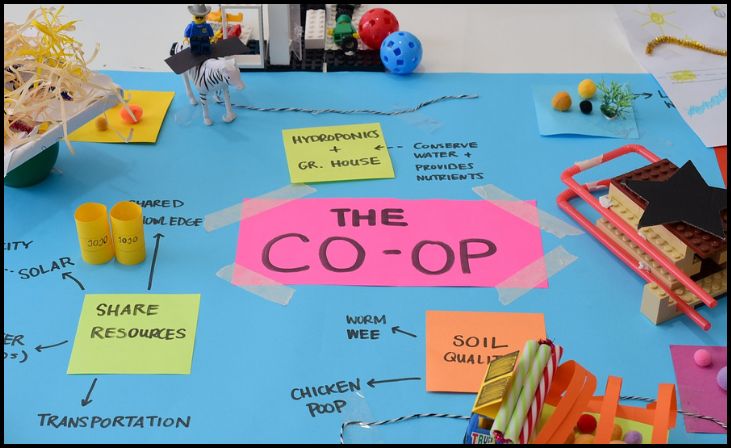Project-based learning (PBL) is a dynamic approach to education that immerses students in real-world challenges. By engaging in hands-on projects, students develop critical thinking, collaboration, and communication skills. There are various types of project-based learning, each with its own unique characteristics and benefits. Understanding these types can help educators design effective learning experiences that cater to diverse student needs and interests. In this blog, we will explore different types of project-based learning and how they can be implemented in educational settings.
Different Types Of Project-Based Learning
Design Thinking Projects

Design thinking projects are structured to follow a specific process that starts with empathizing with the end-user or target audience to understand their needs and challenges deeply. Students then define the problem they want to solve based on these insights. This phase is critical as it helps students narrow down the focus of their project and ensures that it is relevant and meaningful. The next step involves ideating, where students brainstorm and generate a wide range of possible solutions without judgment. This phase encourages creativity and out-of-the-box thinking.
Also Read:- Digital Literacy is a Necessary Factor of Modern Education
After ideation, students move on to the prototyping stage, where they create a preliminary version of their solution. This could be a physical prototype, a digital model, or a storyboard, depending on the nature of the project. Prototyping allows students to visualize their ideas and gather feedback from others. Based on this feedback, students refine their prototype and iterate on their design. The final stage of the design thinking process is testing, where students evaluate their prototype in real-world settings to see how well it solves the initial problem. This iterative process of designing, testing, and refining is key to the success of design thinking projects.
Design thinking projects are valuable because they teach students a systematic approach to problem-solving that can be applied to a wide range of situations. They also foster collaboration and communication skills, as students often work in teams to tackle complex challenges. Additionally, design thinking projects encourage empathy and a human-centered mindset, as students learn to consider the needs and perspectives of others in their design process. Overall, design thinking projects are a powerful way to cultivate critical thinking, creativity, and innovation skills in students.
Challenge-Based Learning
Challenge-based learning is an approach that presents students with complex, real-world problems or challenges to solve. These challenges are often interdisciplinary in nature, requiring students to apply knowledge and skills from multiple subject areas. The goal of challenge-based learning is to engage students in meaningful, authentic learning experiences that promote critical thinking, creativity, and collaboration.
One example of challenge-based learning is a project where students are tasked with designing a sustainable solution to a local environmental issue, such as reducing waste or conserving energy. To tackle this challenge, students would need to research the environmental issue, analyze data, and develop a plan to address the problem. They might work with experts in the field, conduct experiments, or create prototypes of their solutions. Through this process, students not only learn about environmental science but also develop important skills such as problem-solving, communication, and teamwork.
Challenge-based learning is effective because it motivates students by presenting them with real-world problems that are relevant and meaningful to their lives. It also promotes deeper learning by encouraging students to think critically and creatively to develop solutions. Additionally, challenge-based learning helps students develop important life skills such as resilience, adaptability, and perseverance, which are valuable in any field or career.
Place-Based Projects
Place-based projects connect learning to the local community or environment, making learning more relevant and meaningful to students. These projects often focus on issues or topics that are specific to the local area, such as environmental conservation, local history, or community health. By engaging in hands-on activities related to these issues, students develop a deeper understanding of their community and the world around them.
One example of a place-based project is a community garden project, where students work together to plan, plant, and maintain a garden in their school or neighborhood. Through this project, students learn about gardening, nutrition, and environmental science. They also develop teamwork and leadership skills as they work together to achieve a common goal. Additionally, the garden can benefit the community by providing fresh produce and beautifying the area.
Place-based projects are effective because they make learning more relevant and engaging for students. By connecting learning to their local environment, students see the real-world impact of their work, which can be highly motivating. Place-based projects also promote a sense of place and community pride, as students learn about and contribute to their local area. Overall, place-based projects are a valuable way to engage students in meaningful learning experiences that promote academic achievement and community involvement.
Service-Learning Projects

Service-learning projects combine community service with academic learning, providing students with opportunities to apply their knowledge and skills to real-world situations. These projects often begin with students identifying a community need or issue that they are passionate about addressing. They then work collaboratively to develop a project that addresses this need, using academic concepts and skills to guide their work.
One example of a service-learning project is a literacy tutoring program, where students provide one-on-one tutoring to younger students who are struggling with reading. Through this project, the tutoring students not only improve their own literacy skills but also develop empathy and leadership skills as they mentor their peers. The younger students benefit from improved reading skills and increased confidence, making the project a win-win for everyone involved.
Service-learning projects are effective because they engage students in meaningful, hands-on learning experiences that have a positive impact on the community. By connecting academic learning to real-world issues, service-learning projects make learning more relevant and meaningful for students. They also promote important life skills such as empathy, teamwork, and civic responsibility. Overall, service-learning projects are a powerful way to engage students in learning that benefits both themselves and their community.
Also Read:- Ways To Make Online Learning More Effective
Conclusion
In conclusion, project-based learning offers a transformative approach to education, allowing students to engage deeply with content and develop essential skills for success in the 21st century. By exploring different types of project-based learning, educators can create dynamic learning experiences that cater to the diverse needs and interests of their students. Whether through design thinking projects, challenge-based learning, place-based projects, or service-learning projects, project-based learning empowers students to take ownership of their learning and become active participants in their education. By embracing project-based learning, educators can inspire a love for learning that extends beyond the classroom and prepares students for future success.
FAQs
What are the different types of project-based learning?
The different types of project-based learning include design thinking projects, challenge-based learning, place-based projects, and service-learning projects.
How can educators incorporate project-based learning into their teaching?
Educators can incorporate project-based learning by designing authentic projects that align with curriculum goals, providing support and guidance throughout the project, and encouraging reflection and feedback from students.


Leave a Reply